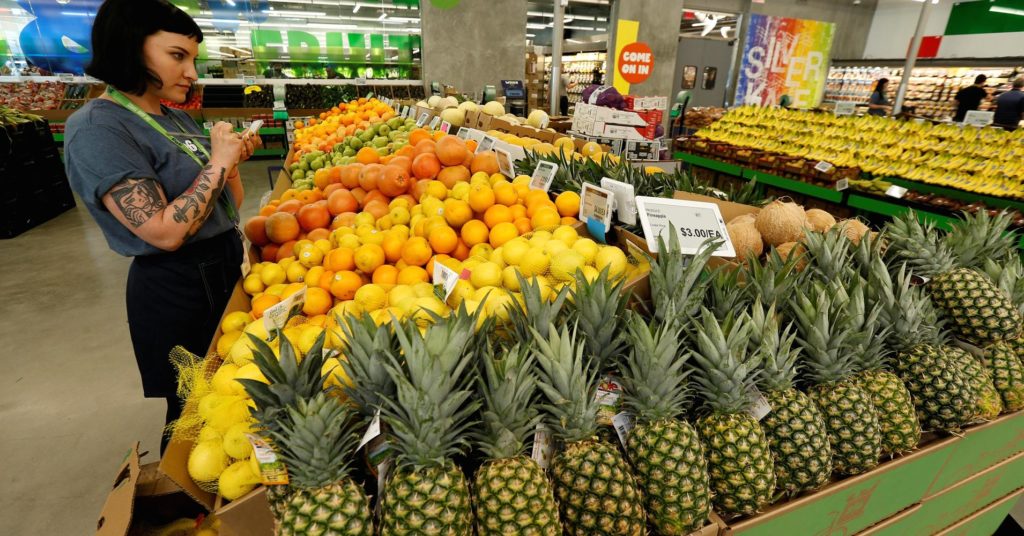
If you spend a lot of money at the grocery store, the right credit card could save you hundreds of dollars per year.
To determine which earns you the most cash back on groceries, CNBC Make It analyzed the most popular cash back offers in the U.S. Using a sample budget based on spending data from the Bureau of Labor Statistics, we estimated how much money each card would save you after five years, adding up bonuses and cash back rewards while deducting annual fees. We also considered other characteristics that could set a card apart, such as interest rates and introductory offers.
While the Chase Freedom was our No. 1 choice for the best cash back card overall, another card stood out as a great choice for people who spend a lot on food.
Our pick for the cash back card if you love to cook
The Blue Cash Preferred offers a whopping 6 percent cash back on groceries year-round. Users earn at that rate on up to $6,000 in purchases and save 1 percent on groceries thereafter. That means if you reach the limit, which is especially doable if you’re shopping for a family, you’ll earn at least $360 in cash back per year.
Plus, the card offers 3 percent at gas stations and select department stores — including Nordstrom and Macy’s — and 1 percent on all other purchases.
Its one drawback is the $95 annual fee, but the Preferred can still save home chefs a lot of money, especially if you qualify for its $200 sign-up bonus, one of the biggest bonuses offered among cash back cards.
By contrast, the Blue Cash Everyday card only offers 3 percent cash back on groceries, but doesn’t require an annual fee. So if you don’t quite cook enough to justify the annual fee of the Preferred, the Everyday is a good alternative. And if you’re not sure how much you’re currently spending at the supermarket, consider using an app like Mint,Clarity Money or Empower to easily sort your purchases over the last several months or year. Both cards offer a notable perk: exclusive ticket presales on concerts, sporting events and more.
Blue Cash Preferred at a glance:
- Cash back: 6 percent at U.S. supermarkets on up to $6,000 in purchases a year; 3 percent at U.S. gas stations and department stores; 1 percent on all other purchases
- Annual fee: $95
- Bonus: $200 if you spend $1,000 within the first three months
- Introductory APR: 0 percent for 12 months on balance transfers
- Variable APR: 14.49 to 25.49 percent based on your credit score
- Foreign transaction fee: 2.7 percent
- Estimated return after five years: $1,780
How we decided
To determine which cash back card offers the best return on grocery shopping, CNBC Make It vetted highly rated cash back cards based on their cash back offers, introductory and eventual APRs, annual fees, bonuses, recommended credit scores, late fees, balance transfer fees, foreign transaction fees, redemption options and customer reviews.
We then estimated how much money each card would save the typical American after one year, two years and five years. Our assessment heavily weighs the five-year return to avoid a large sign-up bonus skewing the results. We also assume that most people want a great card that they can stick with for years, especially since bouncing from card to card can be bad for your credit score.
To estimate the return, we used expenditure data from the Bureau of Labor Statistics to make a sample budget broken down by average annual spending in categories like gas ($1,909), groceries ($4,049), dining out ($3,154) and general purchases ($10,529). The general purchase category includes shopping, entertainment, public transit and vehicle expenses other than gas.
The estimate incorporates bonuses and assumes you have a high credit limit and that you use your card for 90 percent of the purchases you make in these categories, accounting for instances where you have to use cash or shop somewhere that doesn’t accept your card.
Once we had our estimates, we then weighed cash returns against other factors including interest rates and fees, cash-back categories, practicality, bonuses and other perks.























